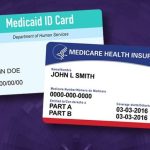Medication Check: How Medicare Helps Seniors Avoid Dangerous Drug Interactions

Photo by Michal Parzuchowski from Unsplash
In the golden years of one’s life, where every moment should be cherished, the last thing a senior should worry about is the unexpected repercussions of the medications they rely on. Yet, with age, many find themselves navigating a complex web of prescriptions – each promising relief or protection from one ailment or another.
The paradox? These very medications, when combined, can sometimes pose risks far greater than the conditions they treat. Dangerous drug interactions can stealthily undermine health, leading to severe complications or even hospitalizations.
Thankfully, there’s a guardian in the shadows: Medicare. By actively providing resources, tools, and oversight, Medicare is committed to helping seniors safely sail the turbulent seas of medication management.
The Challenges Seniors Face
As we age, our bodies naturally encounter a spectrum of health challenges, ranging from chronic conditions like hypertension and diabetes to age-related concerns such as osteoporosis and arthritis. Each of these conditions may necessitate one or more prescriptions.
Polypharmacy, defined as the concurrent use of multiple medications by a patient, is more than just a buzzword in the medical world. For seniors, it’s often a reality. While each drug might be necessary, the interplay between them isn’t always harmonious. Some medications might diminish the effect of others, some might intensify it, and yet others might create entirely new side effects when combined.
The repercussions of adverse drug interactions can be severe. A medication meant to strengthen the heart might, when combined with another, lead to a dangerous drop in blood pressure. Or a drug intended for bone health might interfere with one addressing a digestive concern, leading to nutritional deficiencies. Such interactions not only compromise the quality of life but can also lead to avoidable hospitalizations.
Medicare’s Role in Medication Management
Medicare, the federal health insurance program, is primarily designed for seniors aged 65 and above, though certain younger individuals with specific conditions may also qualify. With its diverse parts, ranging from hospital care (Part A) to medical services (Part B) and more, it serves as a comprehensive health solution for millions.
One of the essential components of Medicare when it comes to medication is Part D, dedicated to prescription drug coverage. It is designed to make prescription drugs more affordable for seniors and ensure they get the necessary medications without the burden of exorbitant costs. Those enrolled in Part D can benefit from a curated list of covered drugs and a structure that prioritizes safety.
For those wondering if they might need to adjust their Medicare plan to better cater to their needs, it’s essential to know that the process is relatively straightforward. Whether one wants to change Medicare supplement plan or alter their Part D coverage, Medicare offers flexibility to adapt to evolving health concerns and requirements.
Medication Therapy Management (MTM) in the Spotlight
Medication management can be a tightrope walk, especially for beneficiaries juggling multiple prescriptions. But Medicare Part D has a solution that not only ensures the right balance but also aims to maximize the benefits while minimizing the risks. Enter the Medication Therapy Management (MTM) programs.
At the core of MTM lies the belief that personalized care is paramount. Beneficiaries have the privilege of one-on-one consultations with healthcare providers, often pharmacists, who are well-equipped to understand the nuances of their medication regimen. This isn’t about a quick chat at the pharmacy counter but a deep dive into the individual’s medical history, current medications, and health goals.
Criteria for MTM Eligibility
For a beneficiary to be eligible for the MTM program, certain criteria need to be met. These criteria ensure that those who stand to benefit the most from the program have access to it:
Multiple Chronic Conditions
Beneficiaries should typically have at least three chronic conditions. Examples include hypertension, diabetes, high cholesterol, asthma, and chronic heart failure.
Multiple Part D Drugs
Beneficiaries must be taking multiple Medicare Part D drugs. The exact number can vary but usually centers around a minimum of two to three prescription medications.
Anticipated Annual Cost
The expected annual cost of these Part D drugs should meet a particular threshold set by Medicare. This amount may change annually, so beneficiaries should stay updated by checking the Medicare website or consulting with their plan provider.
Strategies Employed by Medicare to Avoid Dangerous Drug Interactions
Medication safety is paramount, especially when multiple drugs come into play. Recognizing the potential risks, Medicare has put forth multiple strategies to preemptively address the challenge of drug interactions and ensure the well-being of its beneficiaries.
Comprehensive Medication Reviews (CMR)
This is more than a simple glance over a patient’s drug list. A CMR provides a deep analysis of all the medications a beneficiary is taking – including drugs used in hospitals, over-the-counter medicines, and dietary supplements. It ensures that drugs don’t counteract each other and that dosages are appropriate. After the review, patients typically receive a written summary, which acts as a guide for safer medication usage and can be discussed further with healthcare providers.
Drug Utilization Review (DUR)
Operational at both the point of drug dispensing and during periodic reviews, the DUR system actively monitors and identifies potential medication issues. These can range from drug-drug interactions and overutilization to therapeutic duplication. If any concerns arise, they’re addressed proactively, either by alerting the pharmacist, the prescriber, or the patient.
Educative Tools and Resources
Awareness is a powerful deterrent to potential problems. Medicare offers a plethora of educative tools and resources for beneficiaries. These tools cover a wide range of topics from understanding drug interactions to knowing when and how to take medications. Through brochures, online resources, and workshops, Medicare ensures that its beneficiaries are informed and empowered.
Collaboration with Pharmacists
Pharmacists, with their specialized training and front-line experience, are invaluable in the quest to ensure medication safety. Medicare encourages active collaboration between beneficiaries and pharmacists. Regular consultations, medication synchronization efforts, and pharmacist-led interventions are just a few ways this collaboration materializes.

Photo by Anna Shvets from Pexels
Conclusion
The intricate world of medications in our senior years can be challenging to grasp. Yet, with the comprehensive support and resources offered by Medicare, seniors are well-equipped to manage their health confidently. The Medication Therapy Management program, paired with continuous educational initiatives, showcases Medicare’s commitment to the health and safety of its beneficiaries.





